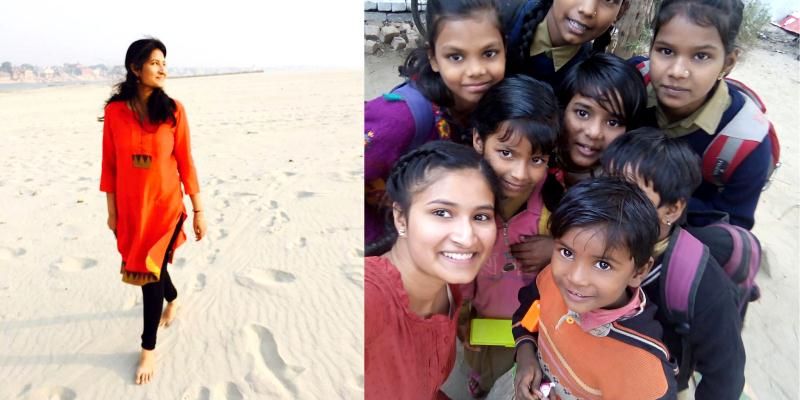This 22-year-old Varanasi girl is on a mission to transform government schools
With visual learning creating a lasting impact on little minds, the Abhikalpana initiative is all about using the physical state as a tool for child development, focused on transforming government school buildings in a way that enhances visual learning and the overall teaching process.
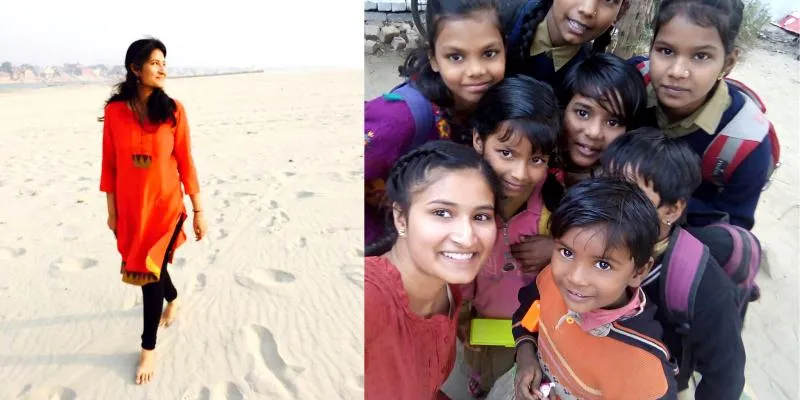
It's a no-brainer that most government schools in India fall short of the standards found in private schools. While government schools provide basic amenities they still lack an environment that fosters wholesome development, one that can motivate students or instil in them the willingness to learn.
Many such schools have not only shabby buildings that distance children from attending regular classes but also miss out on exciting extracurriculars that act as an aid between students and teachers. Deeply saddened by this inequality, 22-year-old Tina Jain, a final year undergrad student from Varanasi, took it upon herself to change the picture government schools painted in the minds of people, quite literally.
Creativity at the core
Tina was always fond of the creative side of life right from her days at Delhi Public School in Varanasi. She reminisces, “School was what shaped my creative side. I was nourished wholly, be it dance, art or a one-on-one interaction with my teachers. This happy environment pushed me to do something for the society and I decided to visit a government school close to where I lived after my exams in 2016. My plan was to conduct workshops for the children there.”
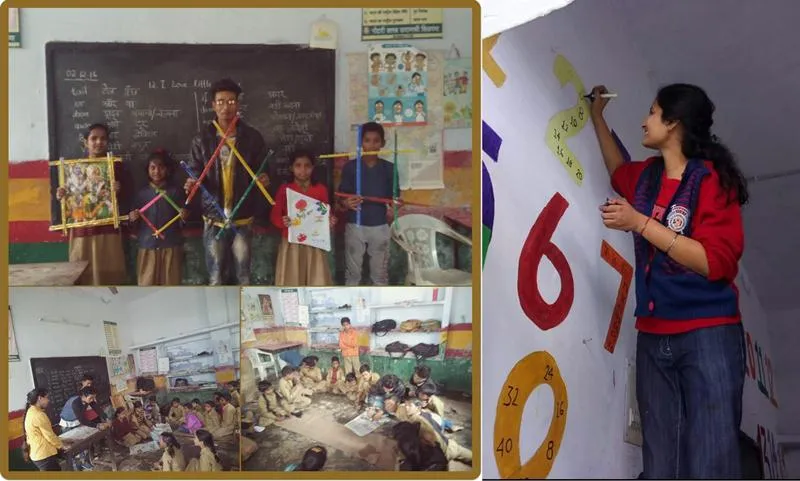
At first, Tina enjoyed interacting with the kids but she soon realised that the school’s dull environment was impacting students in a negative way. “The creativity I grew up with was absent in the school. This was when I knew that government schools needed something that was equally as interesting as the smart classes children in private schools had.”
School walls serving as teachers
Tina's idea was to introduce visual learning to create a lasting impact. To put this in action she began painting the school walls with help from a few friends in November 2016. “Happiness comes with a healthy environment. We began by whitewashing the school building and painting classrooms. When we started wall painting, we incorporated a form of learning. This led to the little ones putting their hands on the wall, trying to read and learn from it,” says Tina.
“The school authorities who were initially hesitant finally understood and accepted the idea after a few discussions. They agreed to bear costs of the whitewash while the team took on the responsibility of the other remaining costs,” she adds. With about 10 volunteers working each day, the school was given a complete makeover in 20 days. Volunteers also studied the curriculum of different classes so they could implement related images and structures in the classrooms.
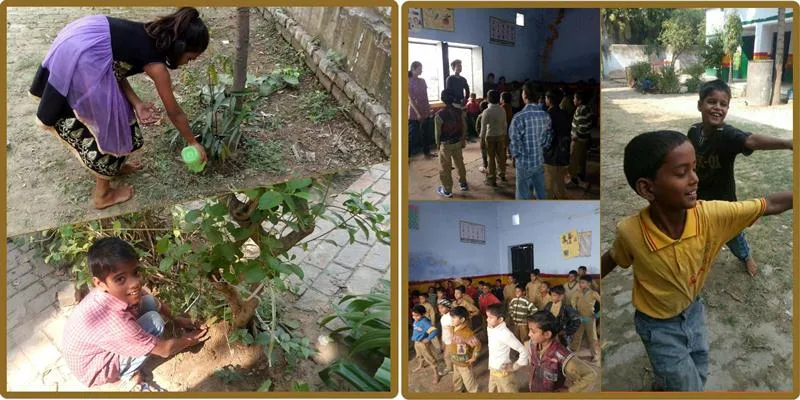
Elaborating on the different ways in which these design changes can help children, Tina explains that their language and communication skills improve as the corridor walls are painted to look similar to four-line registers allowing the kids to practice cursive writing. Vowels, examples from their phonetic lessons and syllables, are painted too. In addition, tables from math are also painted, improving math skills along with exercises of finding differences between two images and crossword puzzles, targeting an overall development in the IQ of the students.
“When the students pass these walls and learn from them every day, these concepts will get embedded in their minds, developing general awareness and a well-rounded knowledge. This will be my biggest success,” Tina exclaims.
Direct involvement
The team's next step was to tap into the talents of the underprivileged kids through direct interaction, making them part of the process. They began conducting various workshops, ranging from planting saplings, art and craft, physical training, creating science modules out of mud to hosting dance workshops, photography and drawing competitions for some lighter entertainment.
A special focus is given to the reading and writing skills as most students lack basic reading skills, says Tina. They are also educated on the importance of festivals and table etiquette. As the movement progressed, teachers began actively cooperating and sharing ideas, she adds.
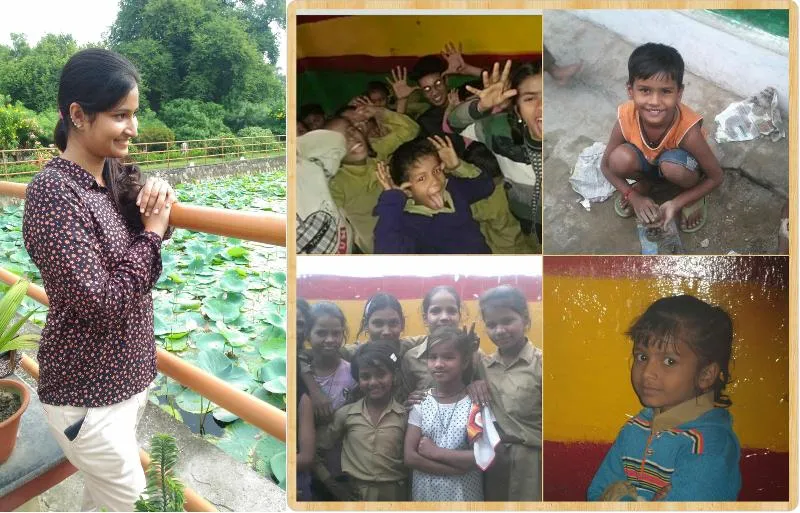
Tina also shares that though challenges were persistent throughout, the initiative has truly been an rewarding experience for her. “When we began seeking for permission from the municipal was hurdle we overcame. We also had coordinations issues with volunteers, convincing parents to let their children stay in school after the midday meal was another hurdle. But these challenges were worth conquering.”
10 schools over one year
What began as summer break volunteering soon turned into a full-fledged movement with Abhikalpana expanding its goodness to 10 schools in Varanasi impacting close to 300 students in each school.
The 20-member volunteer team comprising college and school students has managed to increase the attendance in all schools they have transformed. “Attendance in government schools has always been a major problem. But with each school transformation there was a 100 percent increase in attendance. Parents who sent kids to school only because of the midday meal now stay back and attend health and hygiene workshops,” says the team.
Issues of funding have also been resolved, with many organisations and generous individuals coming forward to fund the initiative. “Our biggest impact, however, has been the smiles we have earned. The learning we have been able to impart. In the future, we wish to renovate more such schools and many more minds on their stereotyped thoughts of government schools,” concludes Tina.
Today, fresh and colourful learning spaces made possible by initiatives like Abhikalpana have put an end to the normal picture associated with government schools. A picture of dull uniforms and duller classrooms, where children are bored and teachers often absent.






